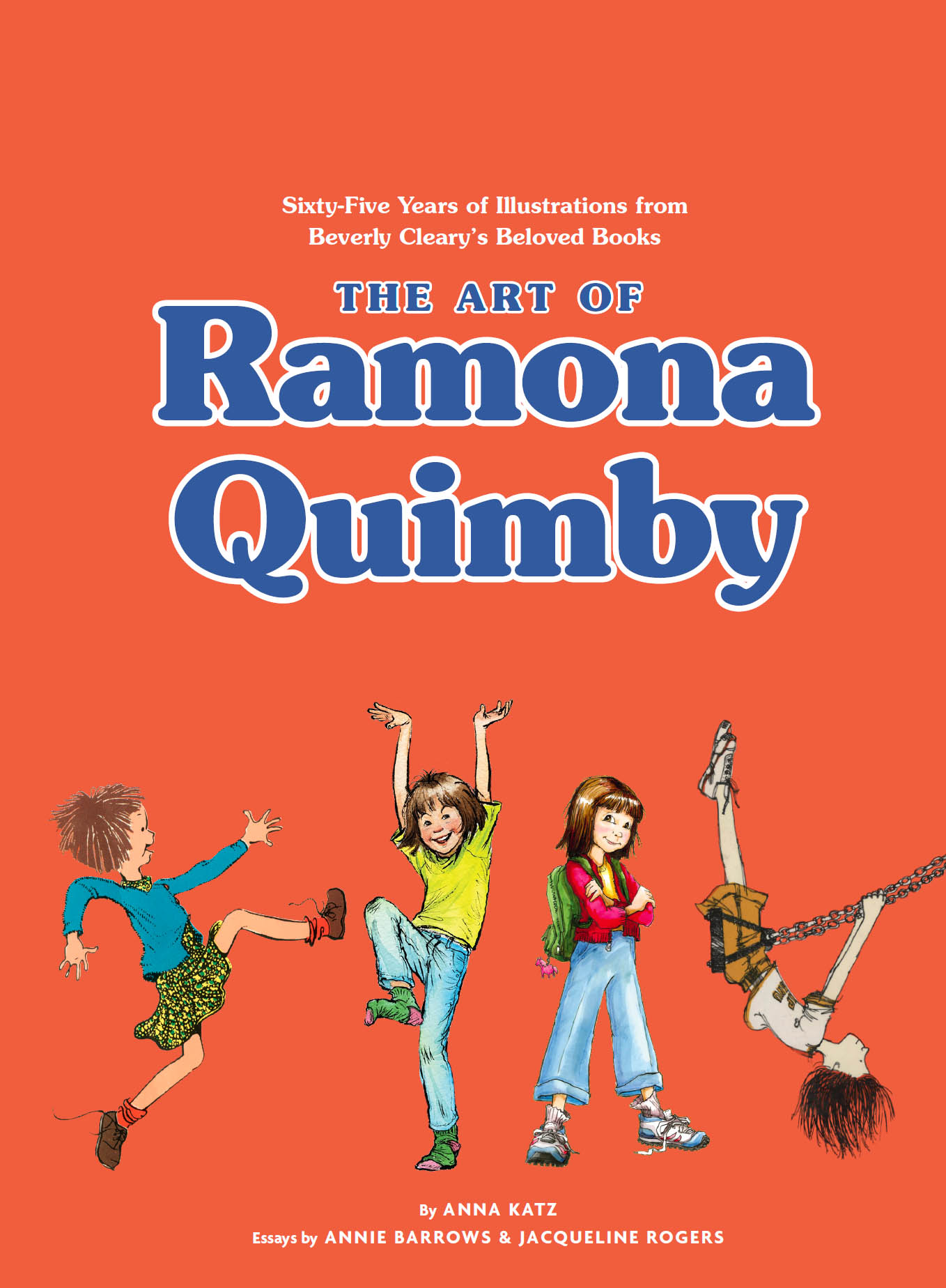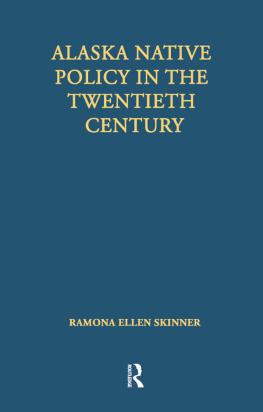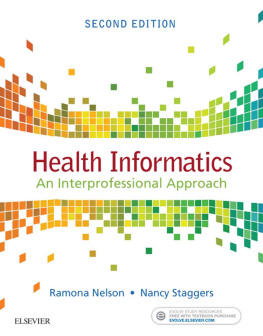

Excerpts from the Ramona Quimby series copyright 2020 by Beverly Cleary.
All other text copyright 2020 by Chronicle Books LLC.
All rights reserved. No part of this book may be reproduced in any form without written permission from the publisher.
constitutes a continuation of the copyright page.
ISBN 9781452177052 (epub, mobi)
Library of Congress Cataloging-in-Publication Data
Names: Katz, Anna, 1984- author. | Barrows, Annie, author of foreword. | Rogers, Jacqueline, 1958- author of afterword.
Title: The art of Ramona Quimby : sixty-five years of illustrations from Beverly Cleary's beloved books / by Anna Katz ; essays by Annie Barrows and Jacqueline Rogers.
Identifiers: LCCN 2020000358 | ISBN 9781452176956 (hardback)
Subjects: LCSH: Cleary, BeverlyIllustrations. | Darling, Louis. | Tiegreen, Alan. | Scribner, Joanne. | Dockray, Tracy. | Rogers, Jacqueline, 1958- | Illustration of books20th century. | Illustrators20th century.
Classification: LCC NC975.5.C54 K38 2020 | DDC 741.6/40922dc23
LC record available at https://lccn.loc.gov/2020000358
Design by Allison Weiner.
Photography by Kyle Chan.
Chronicle Books LLC
680 Second Street
San Francisco, California 94107
www.chroniclebooks.com

FOREWORD
Annie Barrows
Bad Author/Good Witch: What I Learned from Ramona the Pest
When I made the extremely practical decision to abandon my career in publishing to become a writer, I didnt know I wanted to write childrens books. I thought I wanted to write for adults. Accordingly, my first published work was an illustrated book about fortune-telling; my second was about opera; my third, about urban legends; my fourth, Im not exactly sure, because right about that time, I stopped being interested in adults.
I had had some babies, you see, during this period, and suddenly, I was spending all my time with children; I read only childrens books; I talked only to children; I thought only about children. I had nothing to say to grown-ups, and most of the time, I didnt understand what they were saying to me. Why did they want to talk about real estate when they could talk about pterodactyls? Why were they obsessed with traffic when they could be obsessed with buried treasure? Adult conversation had become incredibly dull, and adult books, duller.
It was in this spirit that I decided I would become a childrens book writer.
And in this spirit, I was totally, completely WRONG.
WRONG, WRONG, WRONG.
The problem, the wrongness, was rooted, as it usually is, in arrogance. I decided that I should become a childrens book writer because I was bored by adult books and I loved childrens books. I was going to write childrens books because it would gratify me. This is not an attitude that leads to great childrens books.
However, I didnt know that, and I set about my new goal industriously. My first attempt was a picture book manuscript entitled Audrey and the Fire Engine, a story about Audrey, who is scared of the sound of sirens. Shes so scared of sirens that she starts dreading the noise even when shes not hearing it. Butwhew!Audrey has a wise mother who helps her surmount her fear through several ingenious stratagems. Oh, lucky, lucky Audrey, to have such a wise mother! The end.
I thought it was pretty good. I sent it around to some writer friends and one of them connected me to a genuine childrens book author who kindly agreed to give me her opinion on the manuscript. What this kind and brilliant childrens book author said was: No. This is a book about how great Audreys mom is, not about Audrey. This is not a kids book because its not really about kids. This is a book that will make grown-ups feel good about themselves.
I didnt get it. It was a story about a kid, so of course it was a kids book! I kept reading my manuscript, trying to figure out which sentences I could change to make it better. Should I add more about Audrey? Should I put the mom in fewer scenes? I didnt know how to fix the problem because I didnt understand what the problem was.
Luckily for me, my oldest daughter was at this juncture beginning to move beyond picture book into books with chapters. Also luckily for me, she considered my central duty as a mother to be reading to her. So together, we embarked upon chapter books. Like every red-blooded American family, we began in the Magic Tree House and then ascended the slopes of literature until we reached Beverly Cleary and Ramona the Pest and, above all, Chapter Six, The Baddest Witch in the World.
I very well remember my daughters response to this segment of the book: complete identification with the emotional roller coaster of Ramonas Halloween, which starts with Ramonas passionate desire to be the baddest witch in the world; proceeds to her fear of her scary witch mask, happily overcome by her pride in her costume when Halloween finally arrives; moves on to a scene of liminal mayhem in the schoolyard as all the children, released from responsibility and consequences by their disguises, indulge in forbidden behavior; and then culminates in one of the most extraordinary moments of kid-understanding in childrens literature. In this scene, after tearing around the playground in her witch costume, Ramona realizes with a shock that she is, actually, unidentifiable behind her mask; her teacher, Miss Binney, truly does not know that she is speaking to Ramona. And at this, Ramona experiences a profound and profoundly human terroris she anyone if no one knows who she is? This is followed by an even more shocking thought: What if her own mother cant identify her? Here, we are privy to, even participating in, one of childhoods primary fearsthe mother denying her child (this is what separation anxiety is all about). Ramona wonders, What if her mother forgot her? What if everyone in the whole world forgot her? She removes her hard-won mask.
Right there, as I read The Baddest Witch in the World, I understood what the kind childrens author had been telling me. I understood what a childrens book is supposed to be. Its writing from inside the kids world, inside the kids perspective, almost from inside the kids eyeballs. Beverly Cleary doesnt tell us what Ramonas experiencing; she doesnt separate herself far enough from Ramona to tell us. She doesnt say Ramonas mother would never forget her, but Ramona was worried that she might. She doesnt even insert herself into proceedings to say Ramona thought for a moment that her mother would forget her. Nope, Beverly Cleary gives the story to Ramona herself to experience, and she does it by withdrawing herself from the equation.
There are certainly other ways to write a good childrens book; it is possible for a narrator to be part of the tale in a non-oppressive, non-colonizing, non-grown-uppy way. But to me, the best childrens books, like the Ramona books, are the result of serious unselfishness, even humility. The author sets up the furniture, props the door open, and then covers herself with an author-cozy and disappears, leaving the entertainment to be directed, acted, and understood by the kid-characters. The wise and kindly adult who interprets the meaning of the action or, worse, teaches the befuddled youngster an improving lessonthat person is banished in great kids literature. The main characters, the kids, learn things on their own.
Next page










